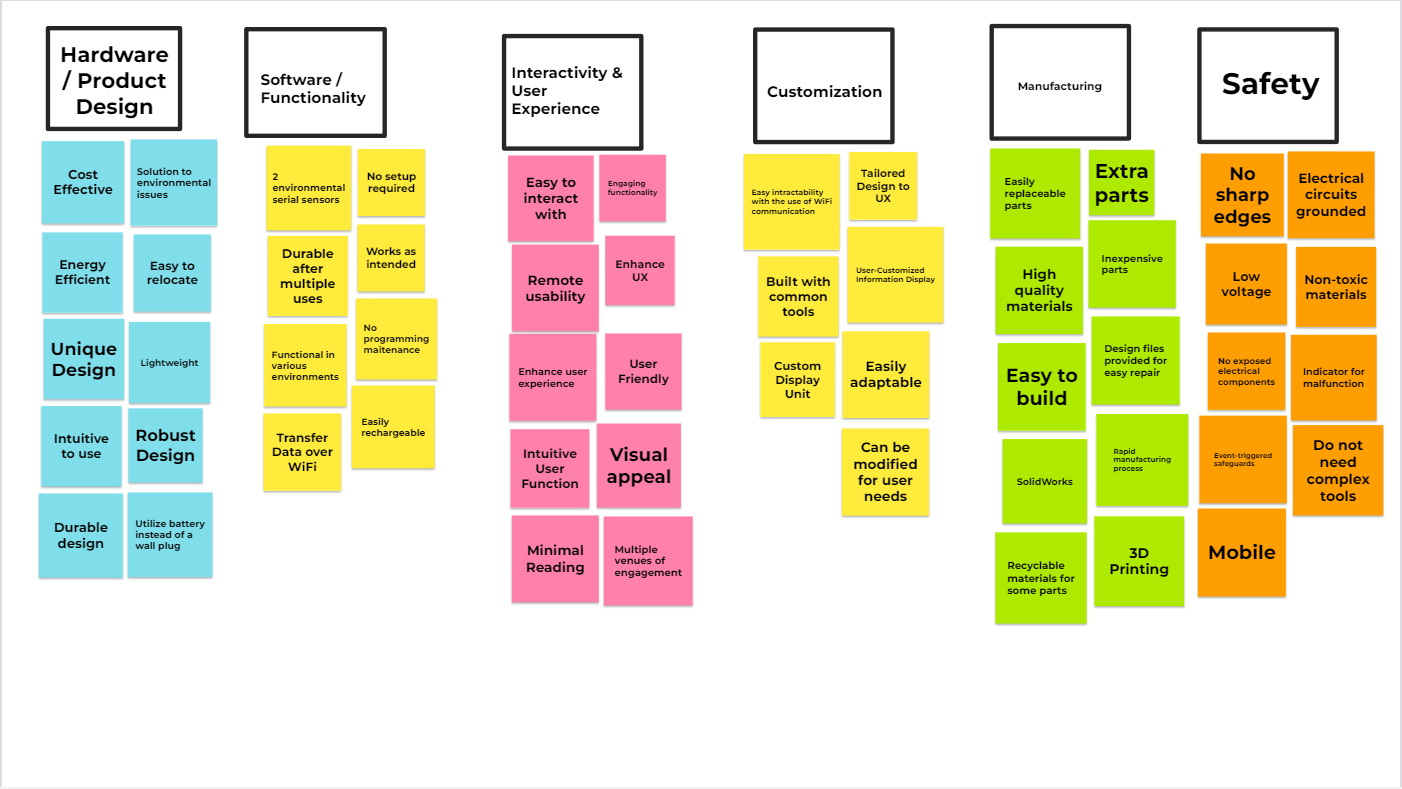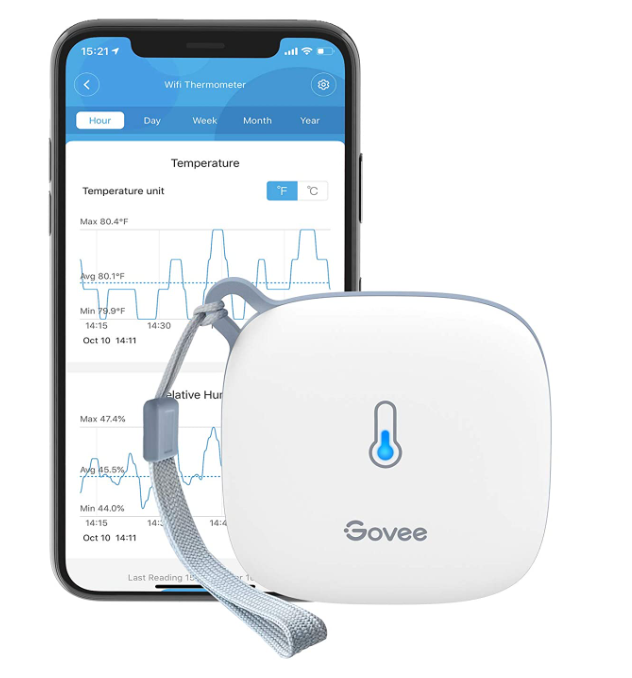The Missing Umbrella
EGR314 Team 205 - Deepit Arora, Enoch Choi, Michael Gross
Project maintained by EGR314-Team205 Hosted on GitHub Pages — Theme by mattgraham
Appendix B - User Needs, Benchmarking, and Requirements
Design Aspects
- Product Design
The product design will be based on the use of environmental sensors for the product based on the following requirements:
- Product should use at least one motor controlled by a motor controller
- Product should be unique and not yet sold in the market
- Product should provide a solution to an environmental/weather issue
- Product should have a robust design
- Product should be intuitive to use
- Product should be energy efficient
- Functionality
- Product should use at least 2 environmental serial sensors
- Product must work as intended even after multiple uses
- Product should communicate key data over WiFi
- Product should function in a variety of environments
- Product should function straight from box
- Interactivity/User Experience
- Product should be interactive in at least one way - creates a dynamic experience for the user
- Product should be user friendly
- Product should be able to be checked remotely
- Product’s feedback response method should be easy to interpret
- Product should have intuitive functionality
- Product should engage the user via visual mediums
- Product should engage the user to continue using the device
- Product should only enhance and not impair the user experience
- Product shall require very minimal reading or audio to understand, less than 150 words of instruction.
- Product shall be engaging enough to have bystanders to learn.
- Customization
- Product should be able to be built with common tools
- Product should allow for easy intractability through the use of external WiFi communication
- Product should display necessary information via a custom display unit
- Product should tailored around customer needs
- Product should be easily adaptable to user needs
- Manufacturing
- Product shall have a set of extra parts in case of damage or destruction.
- Parts must be easy to replace through having spare parts or parts able to be made quickly.
- Product manufactured will be tested and approved by each team member before completion
- Products manufactured should be of higher quality
- Product should avoid expensive parts
- Product should include design files and resources for easier repairs by the user
- Safety
- Product will keep a low voltage
- Product shall not require tools that require training or are dangerous to use.
- Product will not contain sharp edges and will use soft springs, low energy components, and keep air pressure low, if applicable.
- Electrical circuits will be grounded
- Product will give a notice when malfunctioning
- Does not put user in any direct danger
- Product will not have any exposed electrical components
- Products should include adequate safeguards that are event-triggered.
- Product should be made of non-toxic materials
Jam Board

Existing Commercial Solutions
Govee WiFi Thermometer Hygrometer H5179
Link: Price: $40 Vendor:Amazon Description: This product is wifi based temperature and humidity sensor. Temperature is accurate to ±0.54℉/±0.3℃, and humidity is ±3%RH. By refreshing every 2s, you’ll stay regularly updated. Now supports widget function.

| Consumer Voice (Negative) | Related Customer Needs |
|---|---|
| “In less than a year. I have 5 units and | 1. The product needs to be waterproof |
| “no longer work. I was using reptile cages that had misters. I believe they got wet or there was just too much humidity. found rust inside the batteries so I’m assuming the water and high humidity did them in” | 2. The product needs to be reliable |
| Consumer Voice (Negative) | Related Customer Needs |
|---|---|
| “I wanted a more accurate and user-friendly | Should be easy to use |
| “hygrometer for my humidor. With the app I am able to see the temp, and humidity of my cigar cooler from anywhere. You can set the ranges to alert your phone if the temp or RH gets too high or low. Very useful!” | The product needs to be reliable |
Use Cases
User Story #1: Sierra
Sierra is a 19-year-old college student trying to come up with her final project topic. She decides to visit a museum because she’s always had a love for learning and exploring new things. She finds out that there is an exhibit showcasing new technologies, so she checks it out. Majoring in environmental science, she wonders if she can incorporate this into her project. Upon looking at the exhibit, she sees that there are robots designed to help with environmental issues. Sierra has become fascinated with robot technology and how they can be incorporated into fixing environmental issues. She decides that for her project, she would like to work on designing solar panels that rotate with the sun placement.
User Story #2: Timothy
Timothy is five years old and has just recently started kindergarten. His class is going on a field trip to the science center. Tim has never seen or played with a robot before, but since there will be an exhibit, he will get to interact with them. At the exhibit, Tim is able to turn the knobs on the robot. He realizes that if he turns it to the, the robot dispenses water to water the plants, if he turns it to the left, the water stops. Tim learns that a robot does not just have to be a piece of metal with arms and legs - as long as it was a machine that helped people with a task. He also learns that he can “program” a robot by turning different knobs and buttons, making them change their task.